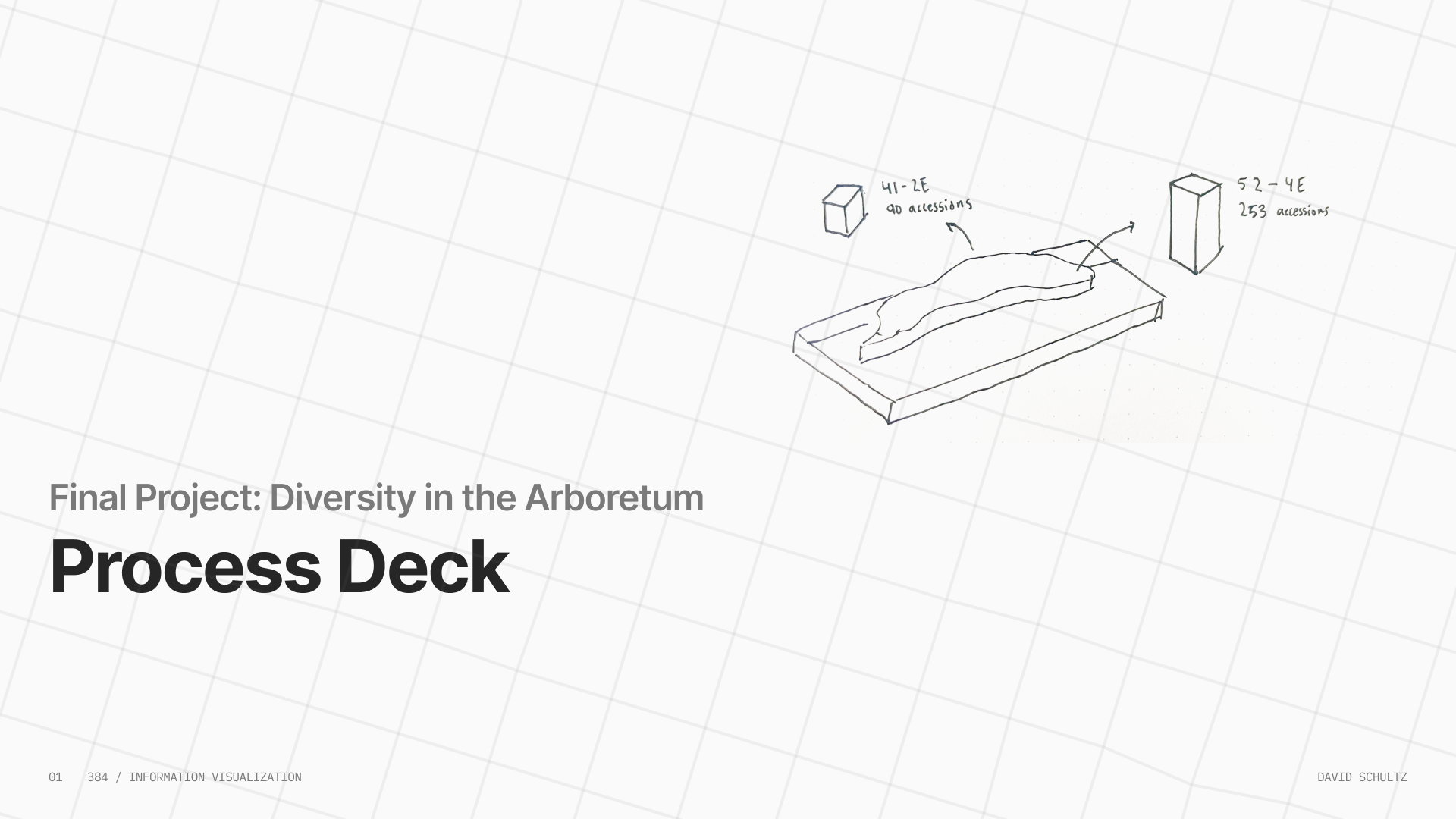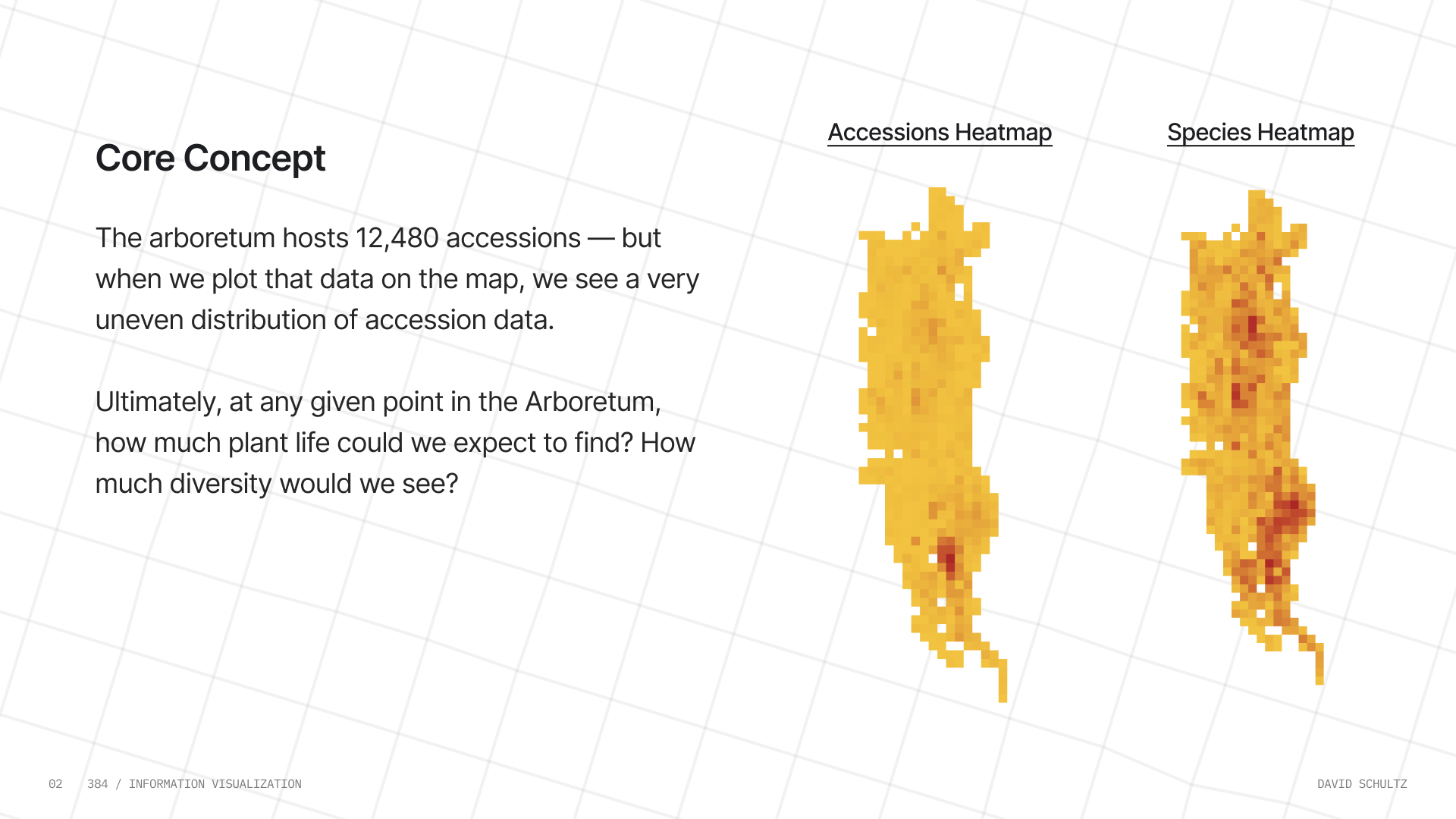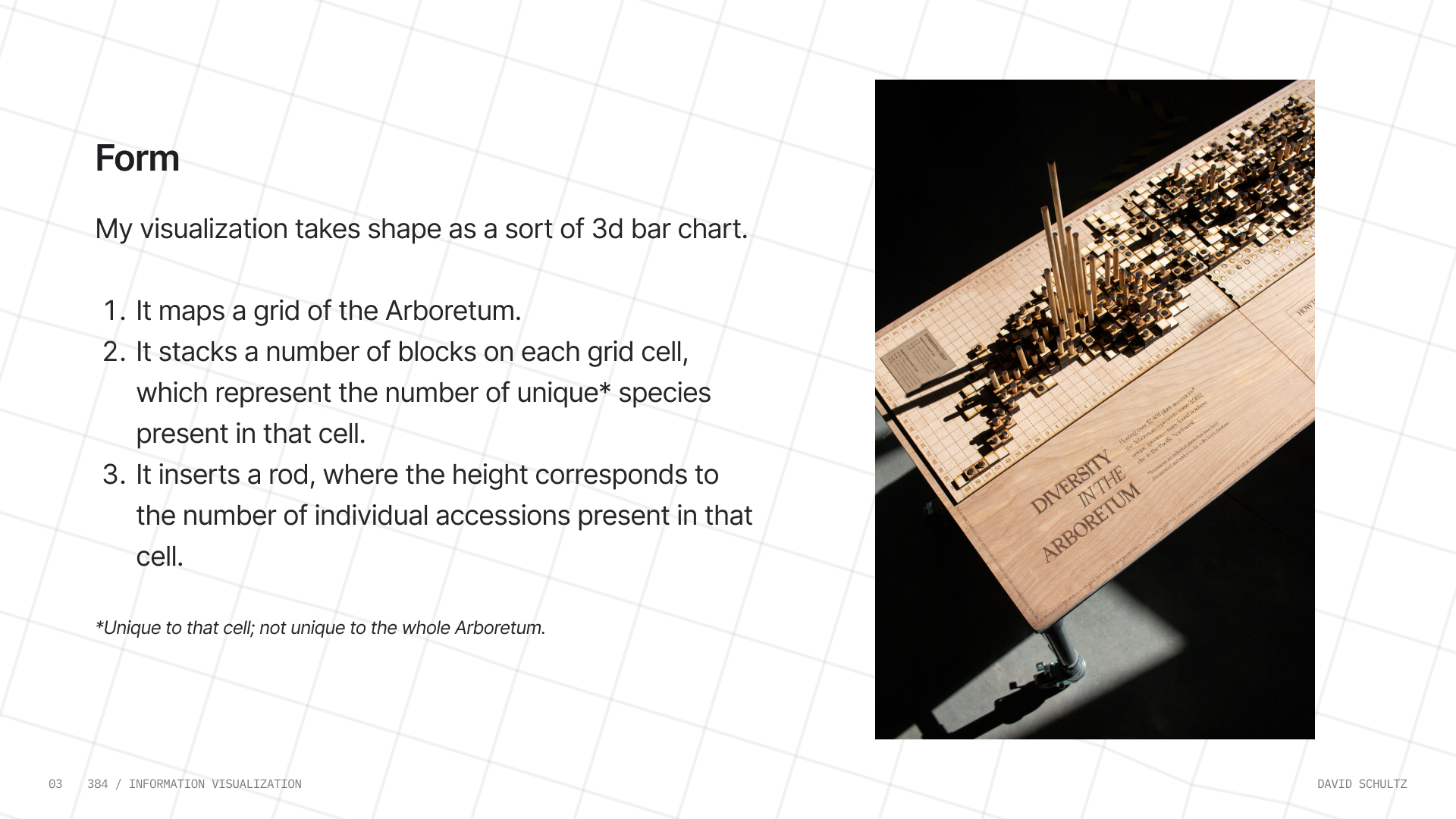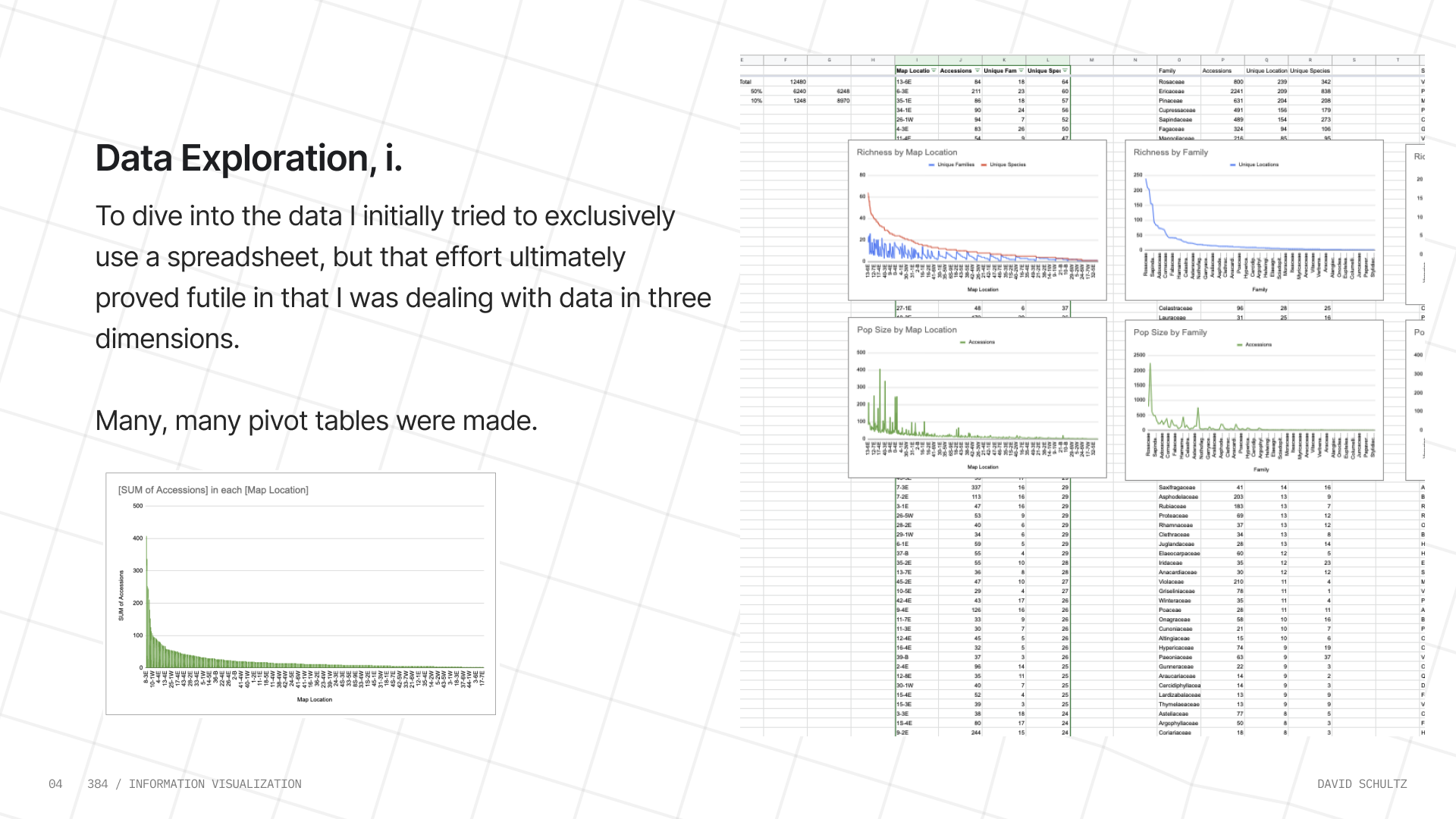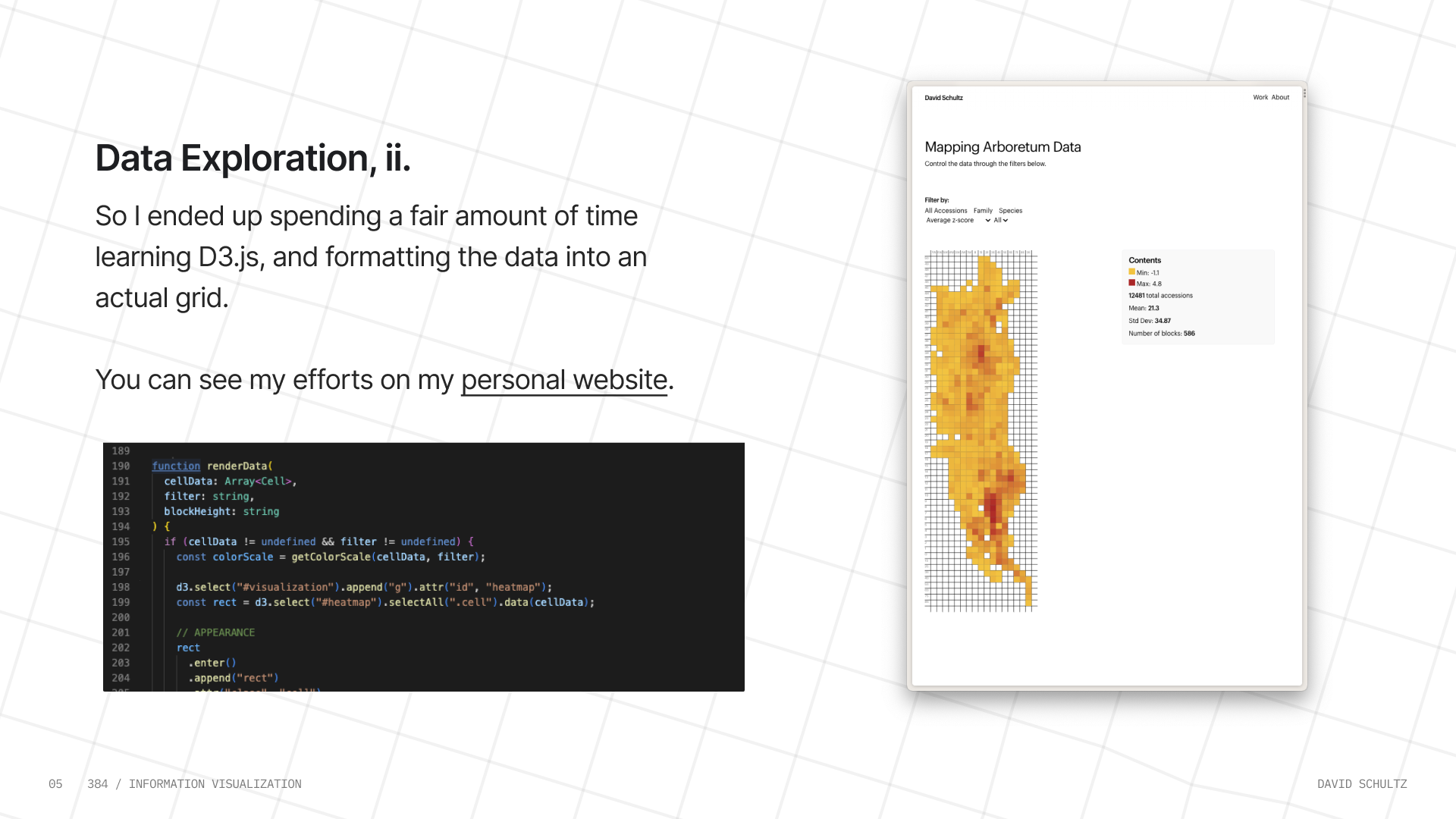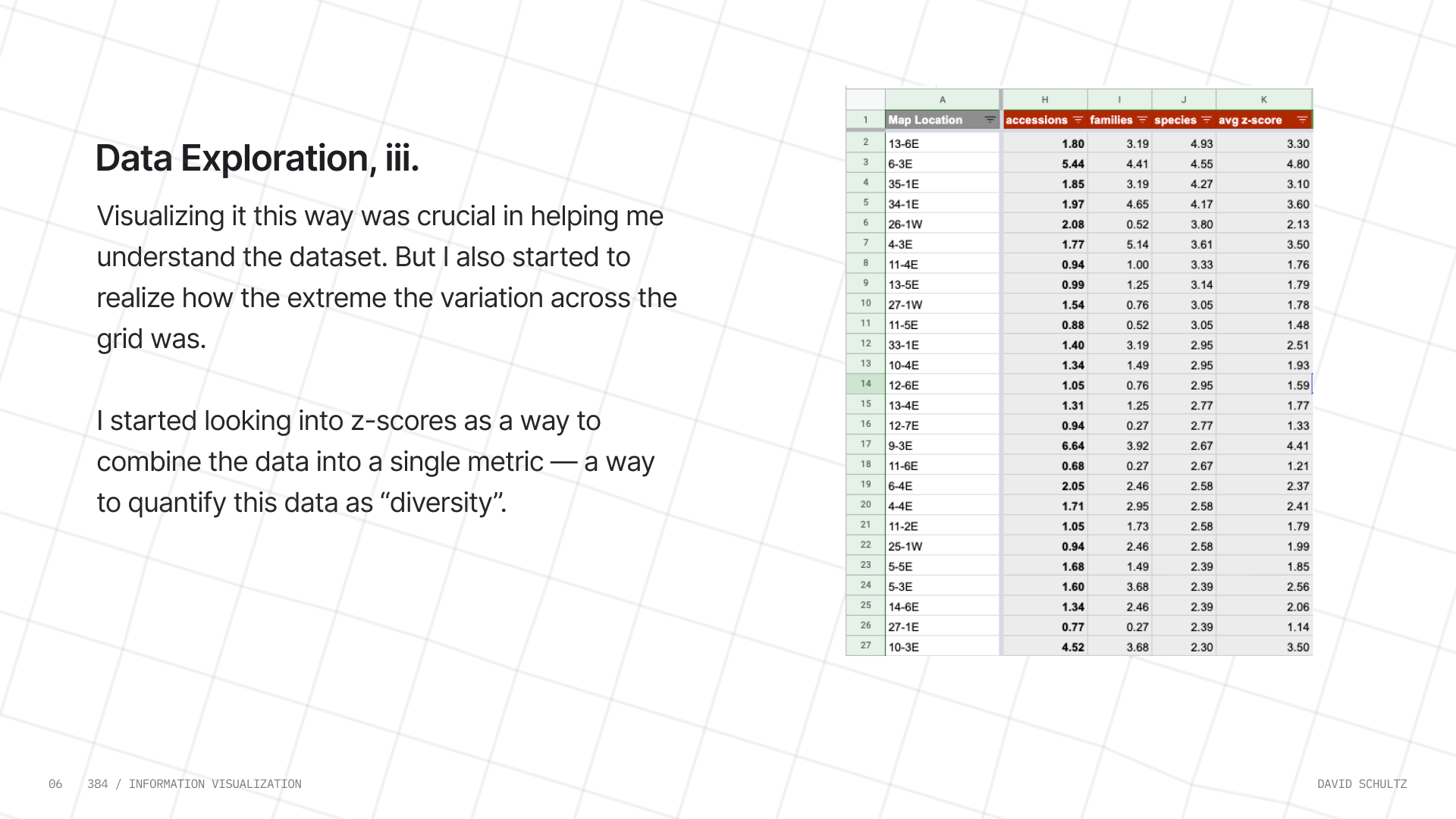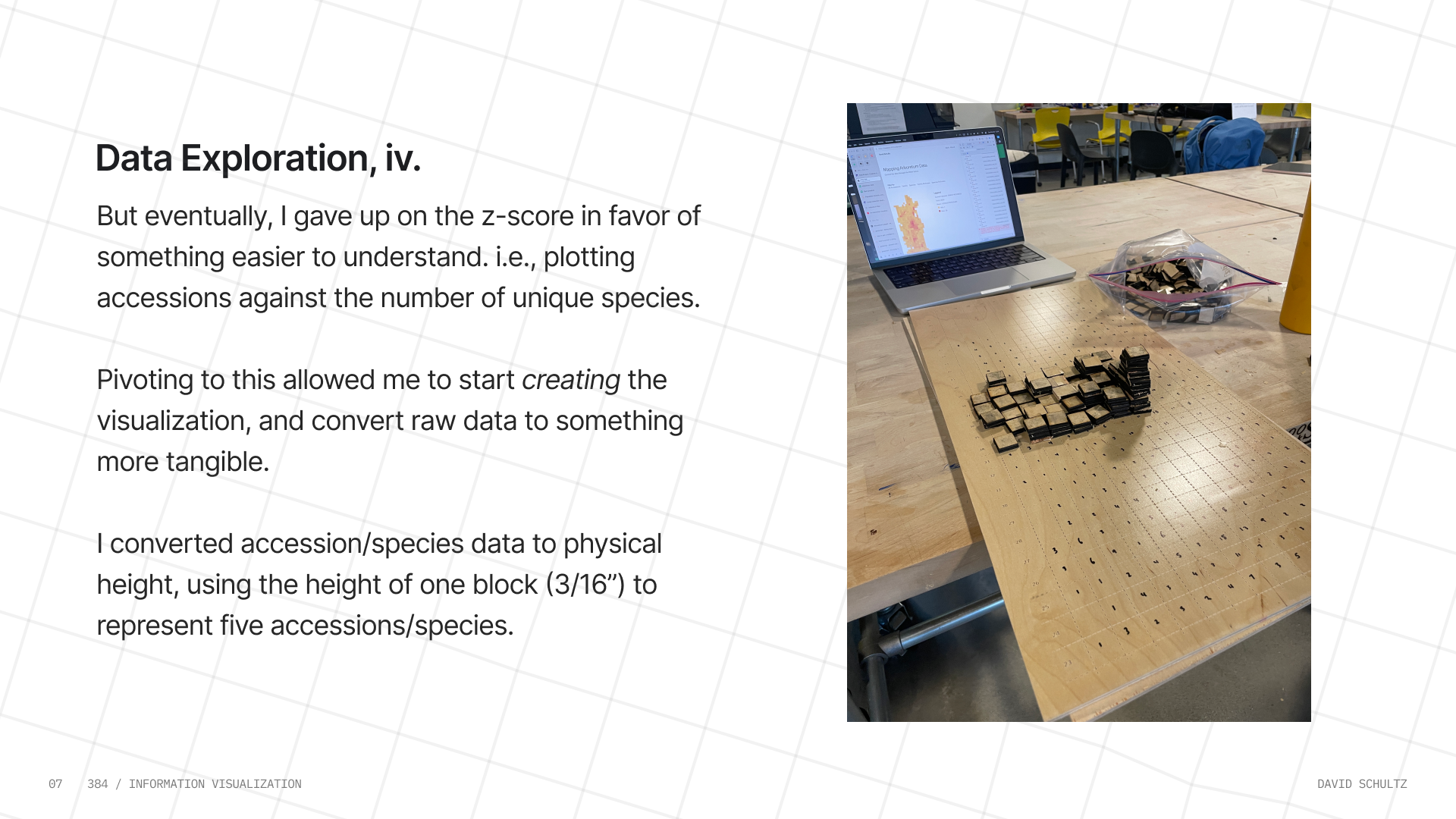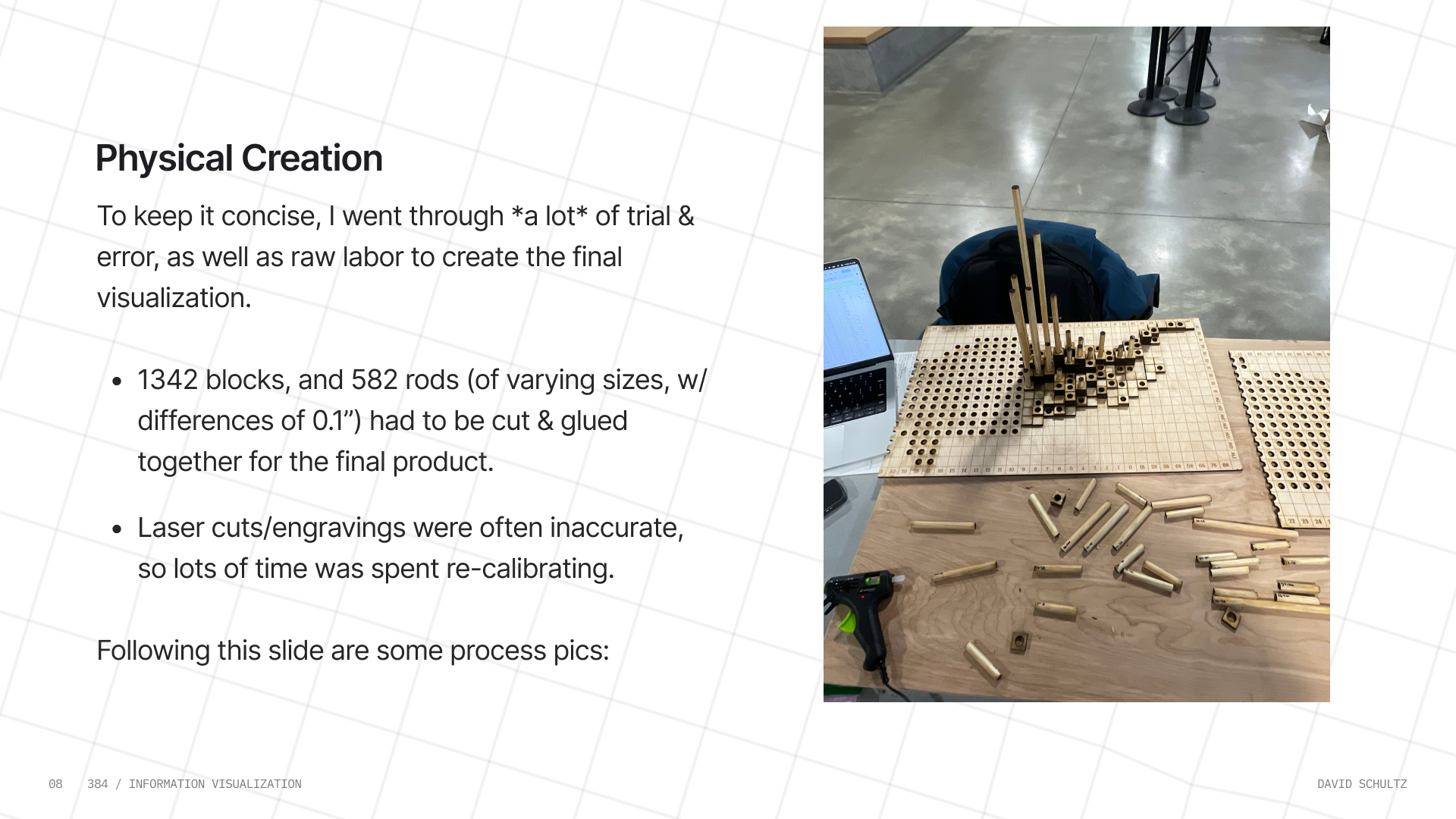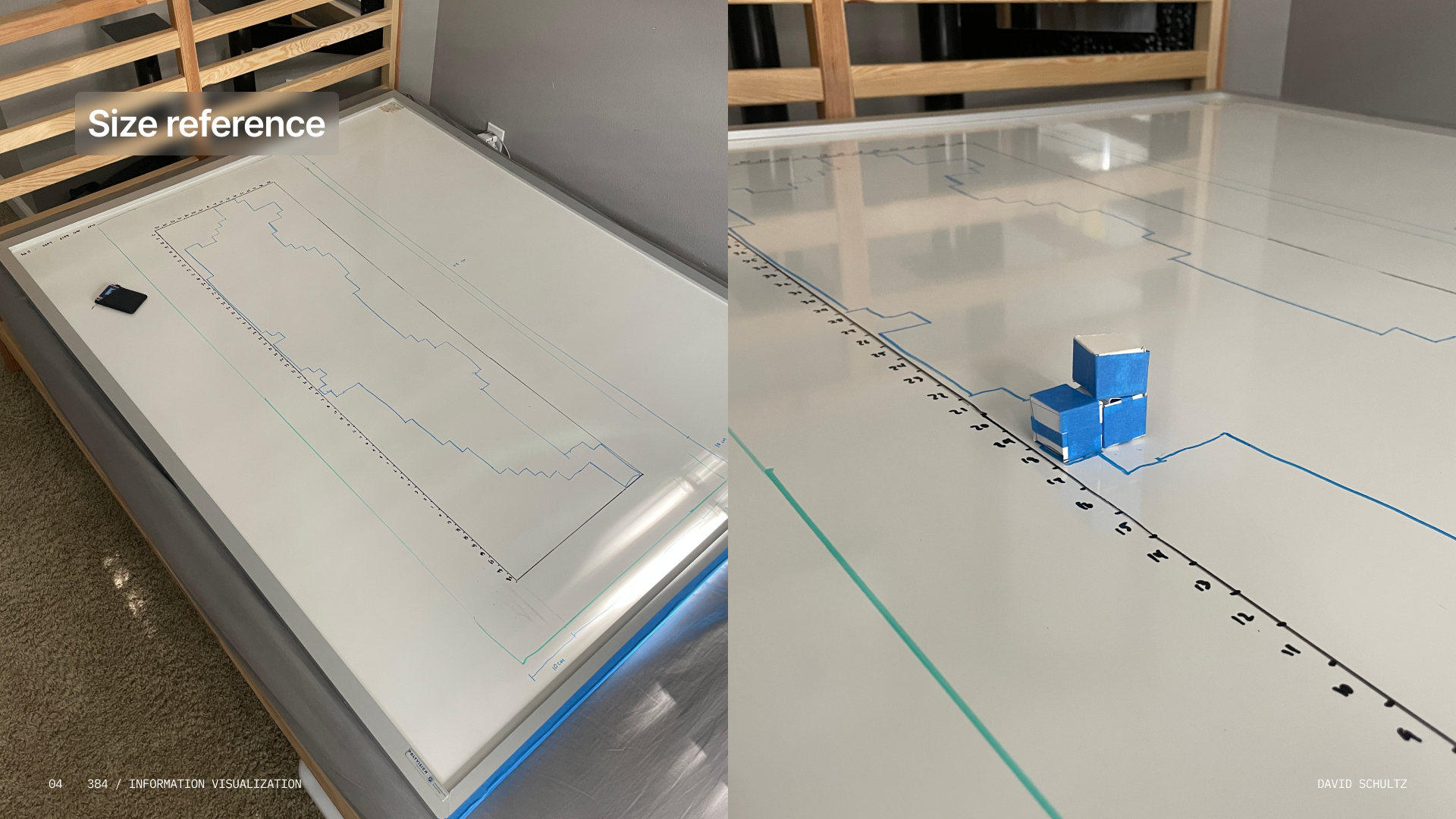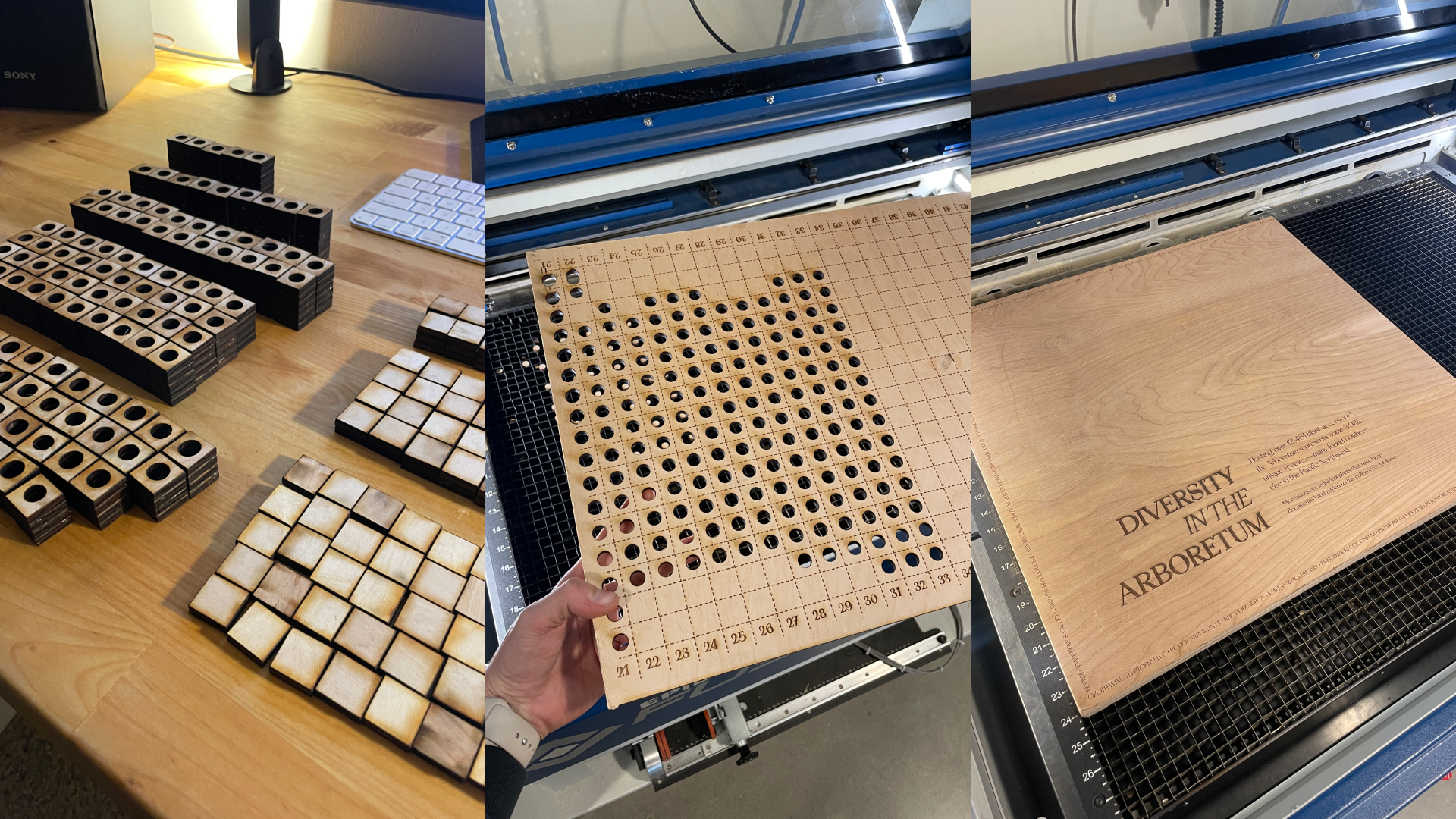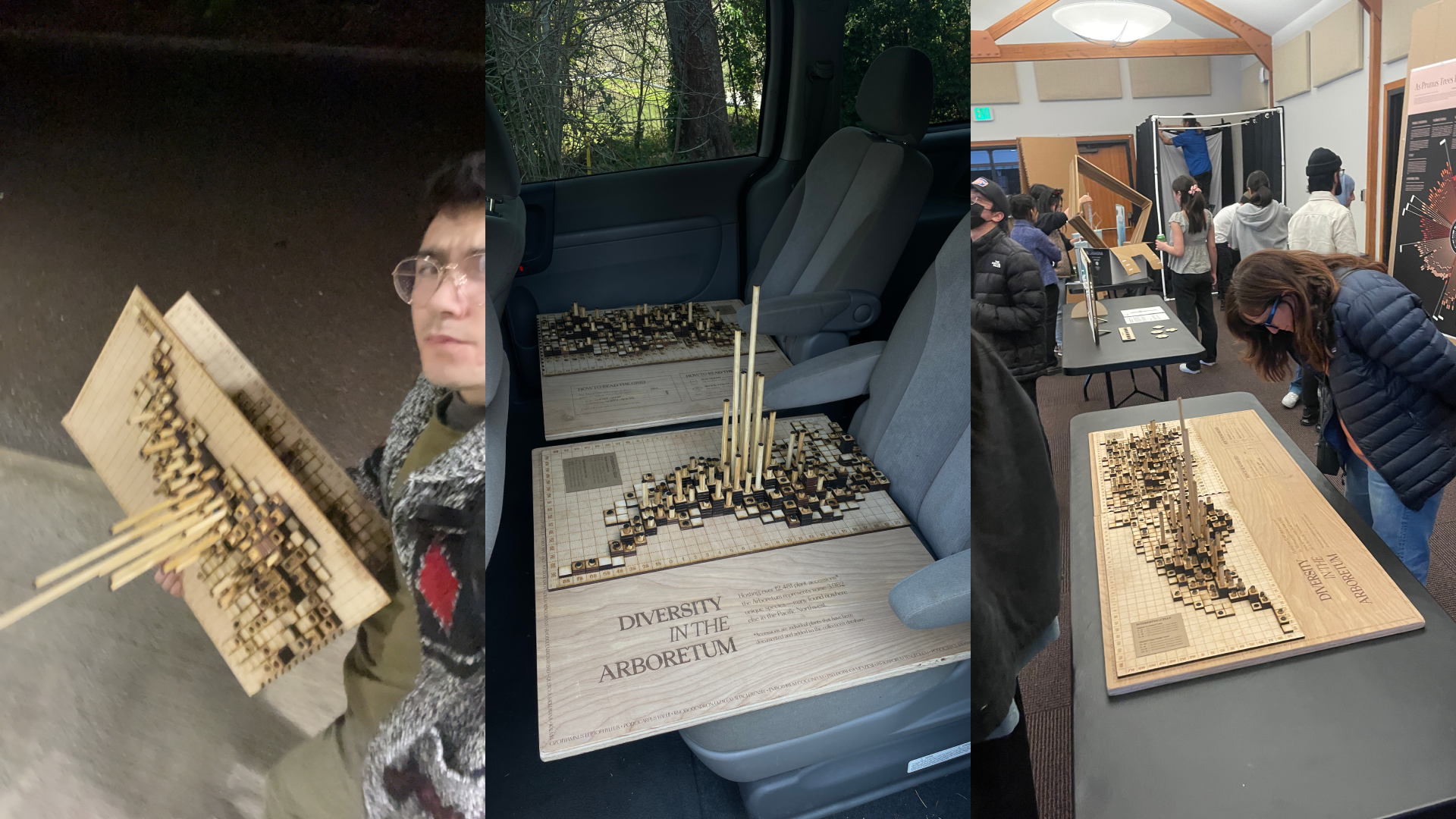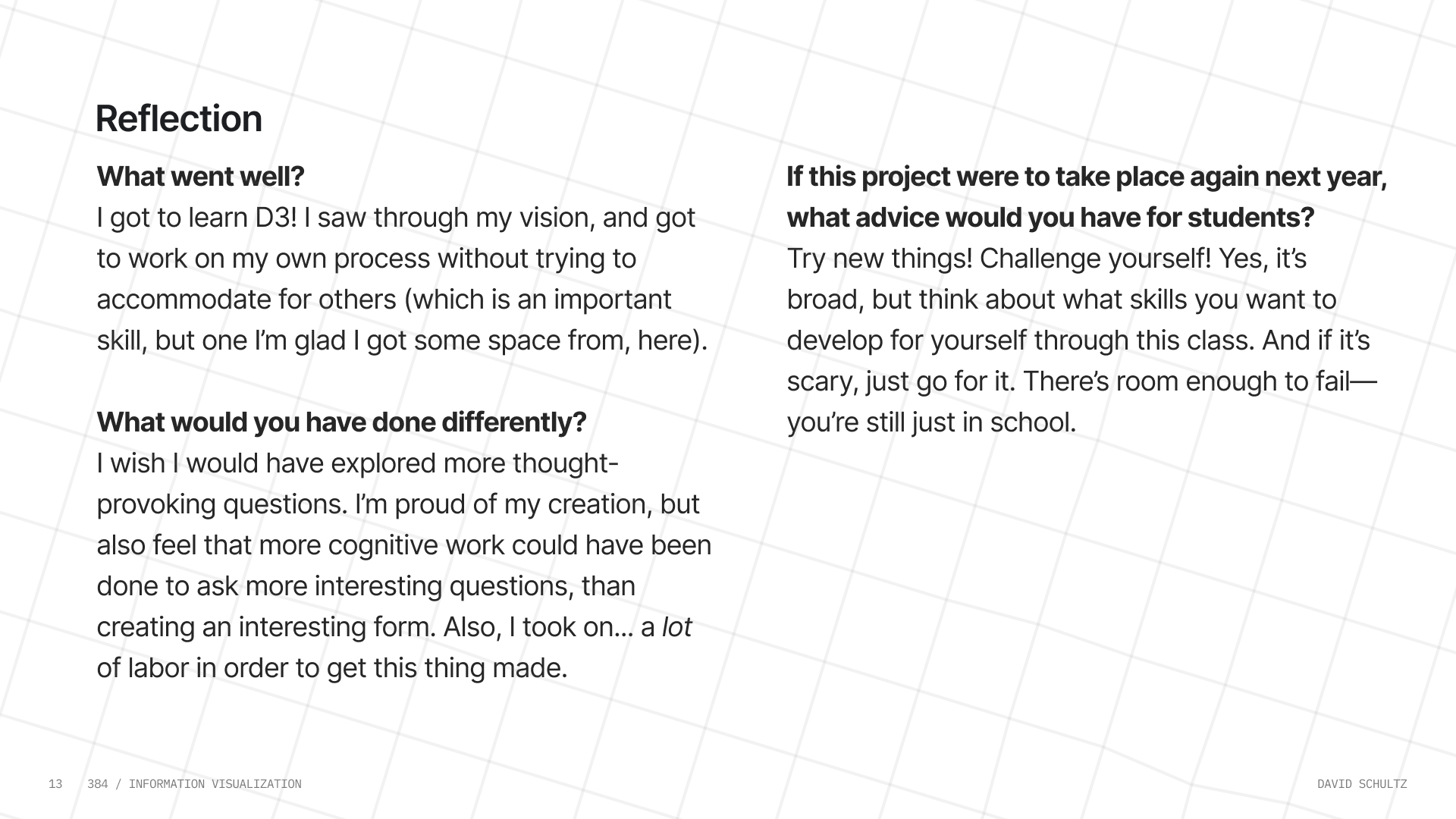Diversity in the Arboretum
2023 ※ Physical data visualization
Built with plywood and a laser cutter, this project "visceralizes" plant diversity in the Seattle Arboretum. It tracks two metrics in each grid cell: the number of plants, and the number of species. By looking at the ratio between these two metrics, observers can get a sense of where they'll find a greater diversity in plant life.
Produced for DESIGN 384: Information Visualization at the University of Washington.
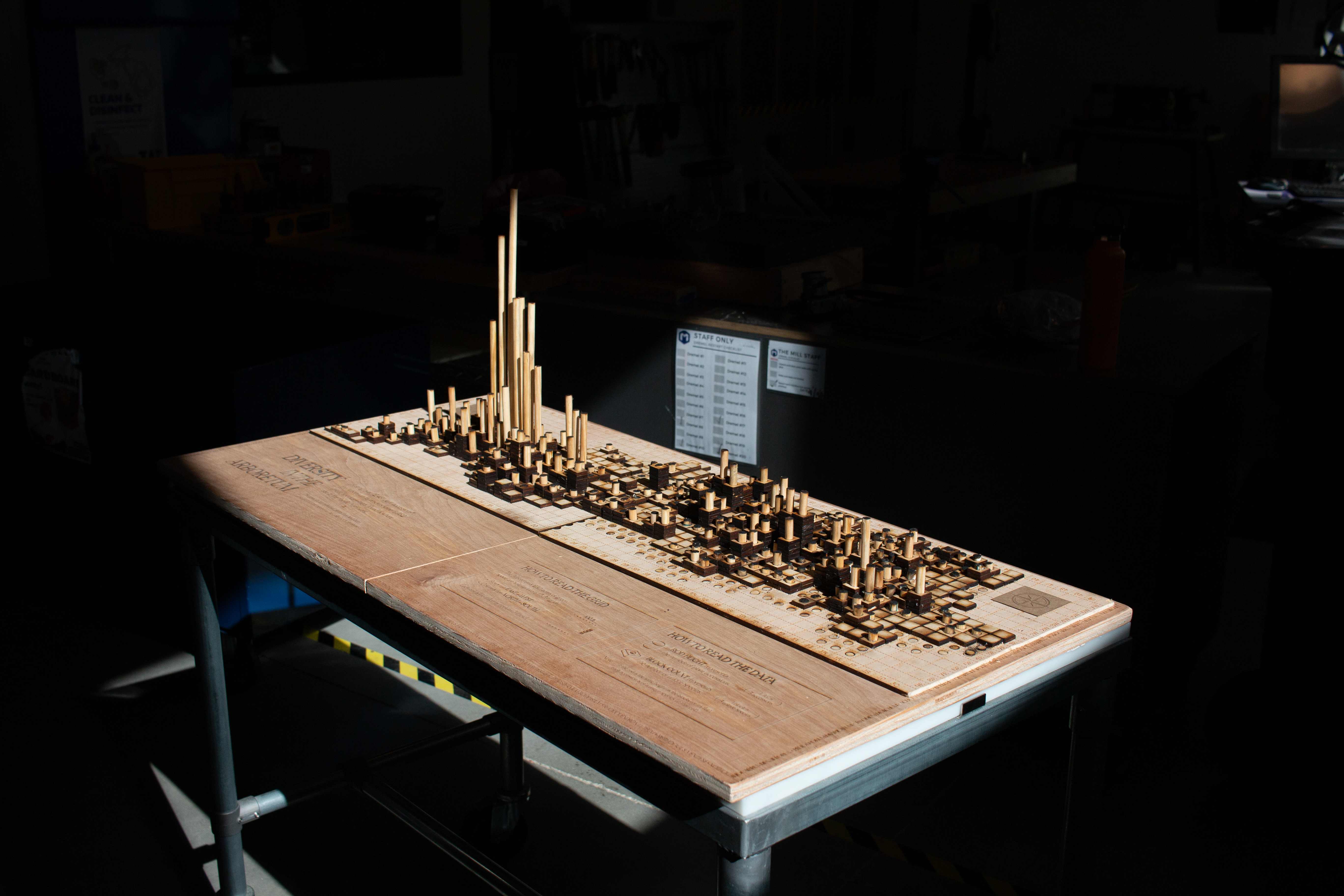
Visceralizing plant diversity in the Seattle Arboretum
Directly south from the University of Washington’s Seattle campus is a massive, 230-acre green space. It sits in the heart of Seattle, marked by bike paths and running trails which snake through its terrain.
It is a total gem, and importantly, it contains a dynamic assortment of over 40,000 plants—some found nowhere else in the Northwest—cared for by volunteers, arborists, and gardeners.
Since 1936, over 12,480 individual plants have been accessioned and digitized into the Arboretum’s database. These accessions can be categorized into 139 unique families + 3982 unique species (many of which are classified as threatened or endangered).
For example, in the dataset, you can find that 491 individual trees belonging to the Cypress family have been accessioned across the Arboretum.
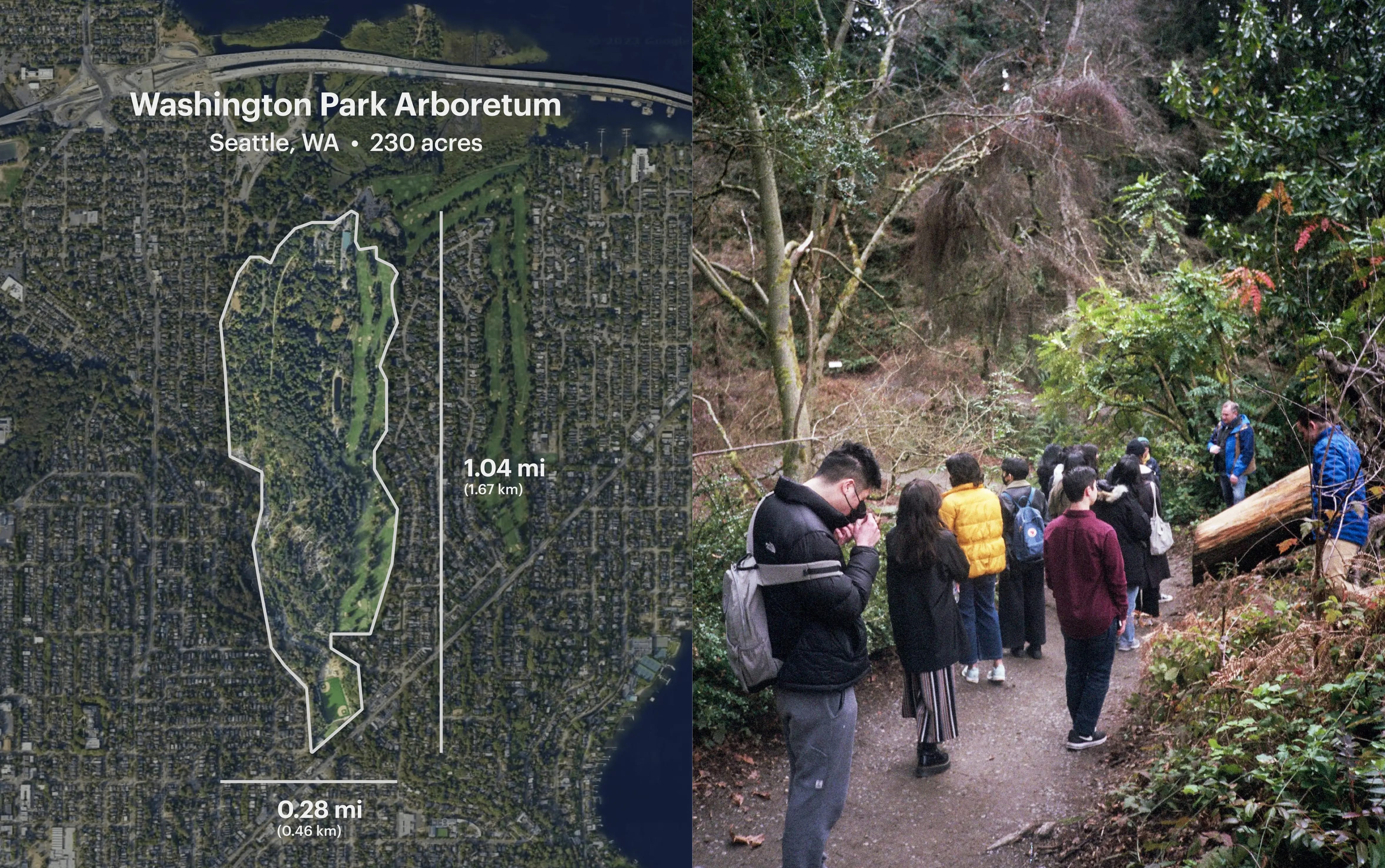
The goal for this project was to set up a physical installation in the Arboretum’s visitor center, and present our project to the public.
I created a 4-dimensional bar chart, which represents the number of accessions + unique species for each cell of the Arboretum’s grid.
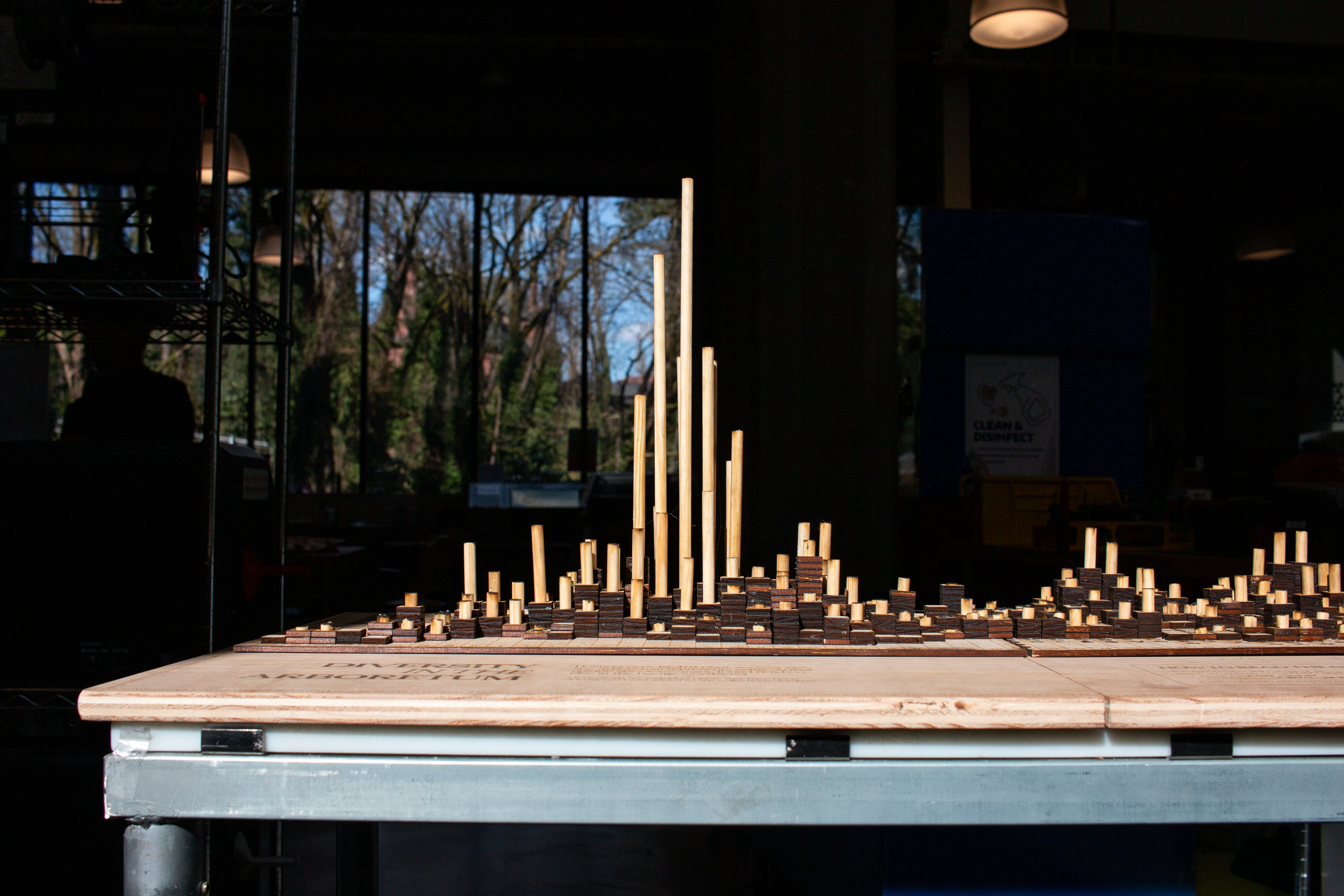
“The idea was to try and capture plant diversity.”
Constructed from laser-cut plywood, each square block represents the presence of five unique species (to its corresponding location in the Arboretum). Inside each block is a wooden rod, whose height represents the number of individual accessions.
The idea was to try and capture plant diversity. Because the heights of blocks + rods are proportional, a viewer can immediately see that some areas of the Arboretum are both more dense, and more diverse.
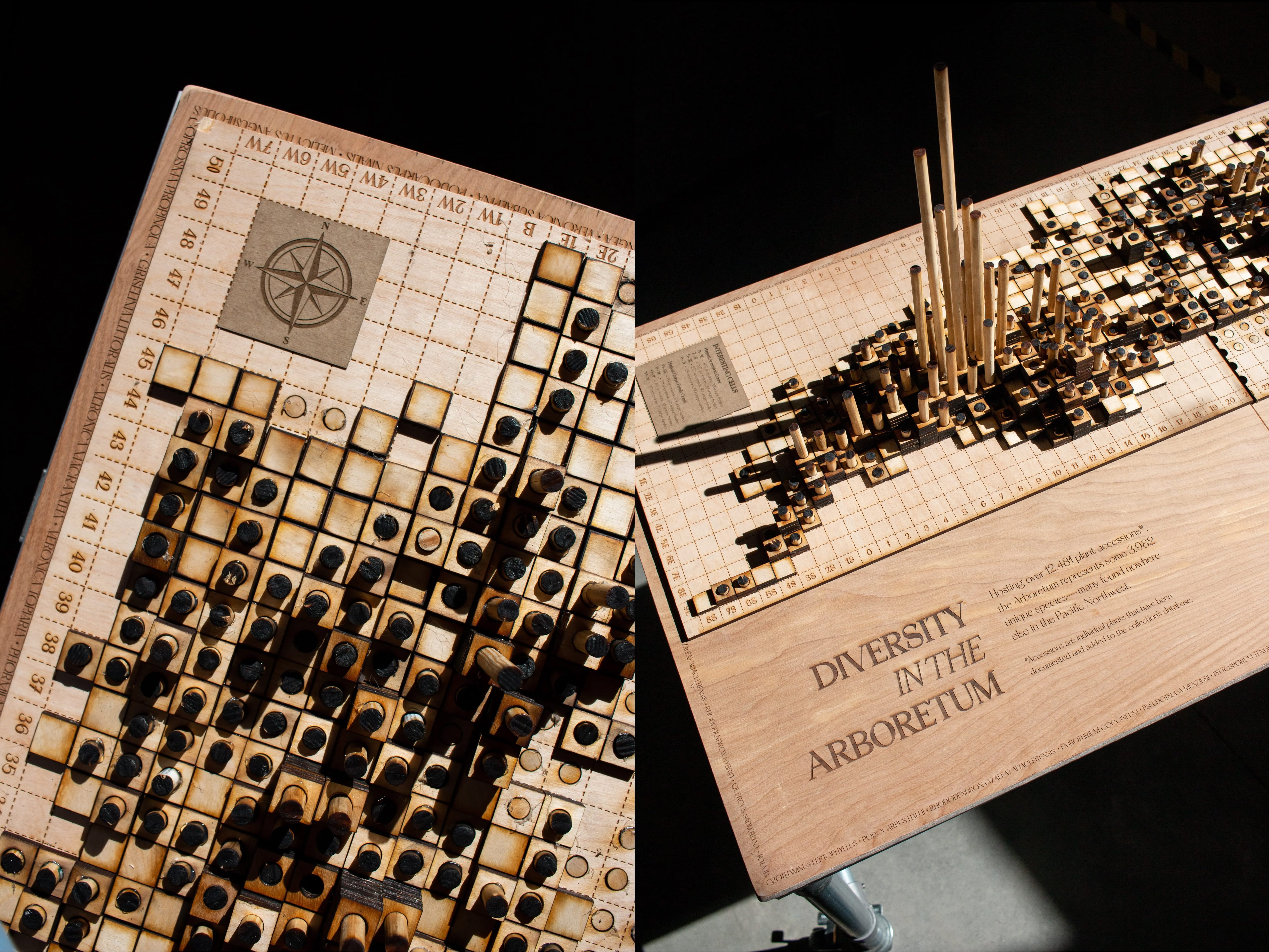
Prototyping with D3.js
When initially exploring the dataset, my goal was to find a story within that people could instinctively understand, just by looking at it. But it can be difficult to pull stories out of an excel spreadsheet, particularly when given 10+ columns to navigate.
I needed to be able to explore the dataset in the context of the Arboretum itself.
I decided it was time to learn a new skill, and loaded up D3.js—a data visualization library for the web. This proved to be a very fruitful decision, as it enabled me to explore the data within the context of the Arboretum's 2-dimensional grid.
